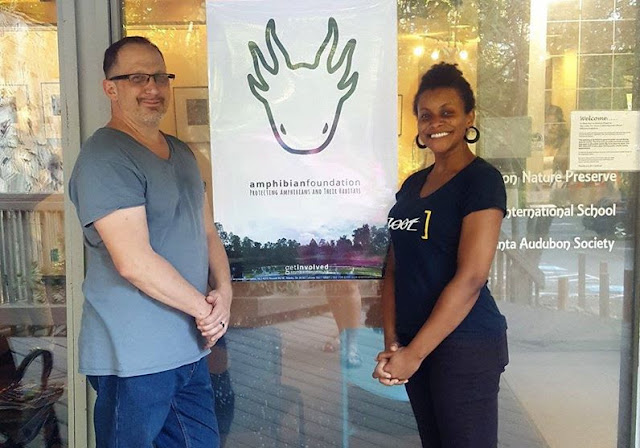The Amphibian Foundation is celebrating our one year anniversary this month! It’s been a whirlwind of a year, and we want to thank you for your continued support. Read below to learn about our tremendous growth and key accomplishments, achieved with your help! Amphibian Foundation founders Mark and Crystal Mandica, standing outside the Blue Heron Nature Preserve shortly after incorporating one year ago. Building an Amphibious Presence in Atlanta If you’re a regular blog guest, then you know that the Amphibian Foundation was founded in 2016 as a nonprofit dedicated to protecting endangered amphibians and their habitats. But did you know that in one year, the Amphibian Foundation: Created an office and labs at the Blue Heron Nature Preserve in Atlanta. Formed a Board of Directors with 6 members. Built a team of 25 staff members and dedicated volunteers. Trained 5 interns, and expanded into an internationally recognized internship program. Cared for more th


